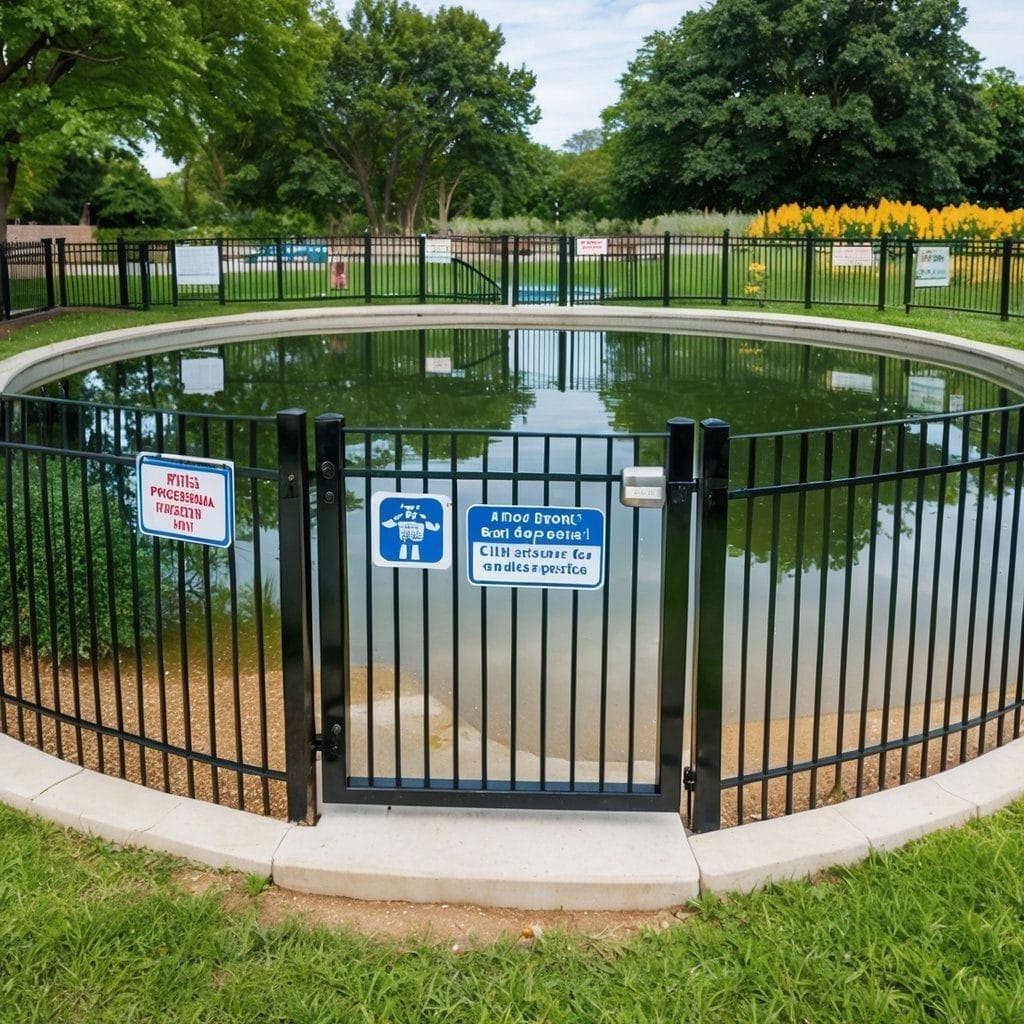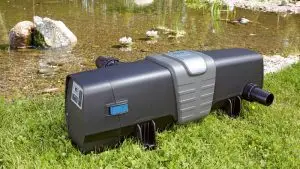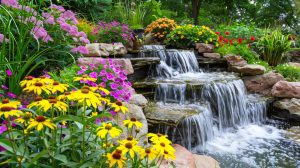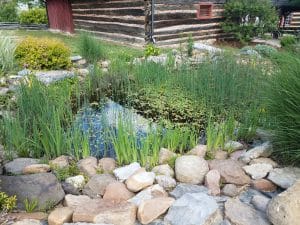
How To Make A Pond Safe For Children: Essential Tips for Parents and Caregivers
Creating a pond can enhance a garden’s beauty, but it comes with significant responsibilities, especially when children are involved.
Making a pond safe for children involves proper planning and ongoing supervision to prevent accidents.
Parents and guardians should be aware of the potential hazards and take steps to ensure that young ones can enjoy the pond safely.

There are several effective measures to improve pond safety, including using physical barriers and making informed design choices.
Understanding the risks is crucial for anyone with a garden pond, as children are naturally curious and may not recognise dangers.
Simple adjustments and vigilant monitoring can make a significant difference in keeping them safe while enjoying the outdoors.
To ensure everyone can appreciate the beauty of a pond without fear, integrating safety features in an engaging way is essential.
Parents must educate their children about safety while also considering the aesthetic appeal of the pond.
This balanced approach not only safeguards their wellbeing but also fosters an appreciation for nature.
Key Takeaways
- Proper planning and design can enhance pond safety for children.
- Regular supervision and education are crucial in preventing accidents.
- Integrating safety features can maintain a pond’s beauty while ensuring child safety.
Understanding Pond Hazards for Children

Ponds present specific dangers for children that caregivers must recognise. The most severe risks relate to drowning, while curiosity about the pond’s features can lead to unsafe situations. Awareness of these hazards helps ensure children’s safety around water bodies.
The Risks of Drowning
Drowning is the leading cause of accidental deaths in children under five, making it crucial to consider pond safety.
Children can fall into ponds unexpectedly, even when caregivers are nearby.
Some factors increasing this risk include:
- Depth of Water: Deeper ponds pose greater dangers.
- Uneven Banks: Slippery or steep edges can cause falls.
- Lack of Supervision: Adult attention is essential even for a brief moment.
Parents and guardians must maintain constant supervision when children are near ponds.
Installing safety barriers, such as fences or thick mesh, can help prevent access and reduce risks significantly.
Attractive Nuisances and Child Curiosity
Ponds can easily attract children due to their natural beauty and wildlife.
This curiosity can lead to unsafe explorations around the water’s edge.
Children often do not understand the dangers posed by ponds and may be drawn to play or reach for objects in the water.
When designing a garden with a pond, consider these factors to minimise risk:
- Visibility: Position the pond where it can be seen easily from the house.
- Natural Barriers: Use plants or rocks to discourage play too close to the water.
- Clear Rules: Teach children about water safety and explain the risks associated with ponds.
By recognising these hazards and implementing safety measures, caregivers can create a safer environment for children.
Essential Pond Safety Measures

To ensure the safety of children around ponds, it is vital to implement specific measures.
Establishing physical barriers and multiple layers of protection can significantly reduce the risk of accidents.
Establishing Barriers and Fences
Installing a strong fence around the pond serves as an effective barrier against unintentional access.
A fence should be at least 1.2 metres high and have no gaps large enough for a child to pass through. Using materials such as wood or metal can provide durability.
Additionally, the fence should have a secure gate that latches properly.
Parents should ensure that children cannot easily climb over or open the gate.
This physical barrier is crucial for child safety, especially in homes with toddlers or young children.
Regular inspections of the fence for wear and tear can help maintain its integrity.
Implementing Layers of Protection
Incorporating various layers of protection adds another level of safety.
One effective layer is using pool alarms that sound when someone enters the water.
These alarms provide immediate awareness, alerting adults to any potential danger.
Another measure is to keep the area around the pond clear of toys, which may attract children.
Using safety nets or covers is another way to prevent accidental falls.
These layers work together with physical barriers to create a safer environment.
All these measures reinforce the importance of active supervision by adults to ensure children remain safe near the pond.
Choosing the Right Pond Design For Child Safety
When designing a pond to enhance safety for children, certain features play a crucial role. This includes thoughtful planning of hidden reservoirs and edges along with incorporating shallow areas and step entrances.
Hidden Reservoirs and Safe Edges
A hidden water reservoir is a smart way to reduce the risk of accidental falls into deeper water.
By constructing the pond with sloped edges leading to a hidden reservoir, the design allows for safe access while minimising the danger.
This method helps children explore the pond’s natural aspects without the fear of deep water nearby.
Safe edges are equally important.
Using soft materials like grass, pebbles, or plants along the pond’s outer perimeter helps to create a safer environment.
A pebble fountain can also enhance the visual appeal while providing a gentle slope that creates a safe entry point for children without abrupt drops.
Incorporating Shallow Areas and Step Entrances
Incorporating shallow areas into the pond design can significantly improve safety.
Shallow areas allow children to wade and play without the danger of drowning.
These zones should be designed to be no more than 30 cm deep, ensuring safety while still offering enough space for interaction with wildlife.
Step entrances provide easy and secure access to shallow areas.
The steps should be wide and made of non-slip materials to reduce the chances of slipping.
It is also helpful to use sturdy plants around the areas to create natural barriers, guiding children toward safe exploration spots in and around the pond.
Childproofing Methods for Ponds
Ensuring a safe environment around a pond involves several practical measures. Key childproofing methods include installing effective pond covers and selecting safe pond accessories. These steps help create a secure area for children while maintaining the beauty of the pond.
Installing Pond Covers and Nets
Pond covers and nets are essential for child safety. They act as a barrier, preventing young children from accidentally falling into the water.
When choosing a cover, consider using a thick mesh net.
This type of material provides a sturdy layer of protection while allowing sunlight and rain to reach the pond.
It’s important to ensure that the net can support the weight of a child.
Installation should be done securely, with the cover anchored firmly around the pond edges.
Some options, such as grill covers, can provide additional protection, especially in larger ponds.
Regular inspections are necessary to check for wear and tear, ensuring the cover remains effective over time.
Choosing Safe Pond Accessories
Selecting appropriate pond accessories also plays a vital role in child safety.
Avoid sharp-edged decorations or heavy items that could fall or tip over. Instead, opt for lightweight, non-toxic materials.
Using safety measures like soft landscaping around the pond can help soften potential hazards.
Adding shallow areas or gradual slopes can ensure children can explore the pond safely.
Avoid placing toys or other attractants too close to the water.
This can reduce the chance of children being drawn to the pond without supervision.
Supervision and Child Education

Effective supervision and educating children about safety are crucial in making a pond a secure space. Parents and guardians play a significant role in ensuring that kids understand the potential dangers while enjoying the beauty of nature.
The Importance of Constant Adult Supervision
Constant adult supervision is essential when children are near a pond.
Even a shallow body of water can pose risks if left unmonitored.
Parents should always keep an eye on kids, especially when they are playing near the water.
Designating a specific adult to supervise can help.
This adult should stay close enough to intervene quickly if necessary.
In addition, adults must remain alert to any potential hazards, such as slippery surfaces or rough terrain around the pond.
Creating safety rules can also help.
For example, children should learn not to run near the water or play near the edge without permission.
Adults must reinforce these rules consistently to ensure that kids understand their importance.
Educating Children About Pond Safety
Teaching children about pond safety is just as important as supervision.
They should be informed about the possible dangers of being near water.
Key topics to cover include the importance of staying at a safe distance and the need to notify an adult if they see someone in trouble.
Using clear, simple language helps children understand better.
Parents can also incorporate fun activities, like safety games or role-playing, to emphasise the lessons learned.
Engaging with educational materials such as books or videos that highlight pond safety can reinforce these messages.
Regular discussions about pond safety can keep the topic fresh in children’s minds.
Parents should encourage questions so children feel comfortable expressing concerns.
This combination of education and supervision creates a safer environment for kids to enjoy nature.
Wildlife Considerations in Garden Ponds
Attracting Safe Wildlife
Creating a wildlife pond can provide a habitat for many beneficial creatures.
To attract safe wildlife, it is important to incorporate native plants, as they support local insects and birds.
- Choose native plants: Include water lilies, reeds, and marsh marigolds.
- These plants not only beautify the pond but also provide food and shelter for various animals.
- Add rocks and logs: Placing these around the pond encourages frogs, toads, and beneficial insects to visit.
- They offer hiding spots and breeding areas.
- Create diverse habitats: Vary the pond’s depth and add shallow edges.
- This variation helps attract different species, including pollinators like bees and butterflies.
These strategies promote a balanced ecosystem while keeping children safe by drawing in less harmful wildlife.
Preventing Hazardous Animal Visits
To maintain safety, it is crucial to discourage visits from animals that may pose a risk.
This can be approached through careful planning and monitoring.
- Use pond covers: Installing safety nets or covers can keep small children from accidental falls while deterring larger animals such as dogs or cats.
- Remove attractants: Keep food sources away from the pond.
- Secure trash bins and remove any leftover pet food that might attract wildlife.
- Regular checks: Monitor the area regularly for signs of unwanted wildlife.
- This proactive approach allows for timely responses to any potential hazards.
Integrating Safety Features With Aesthetics
Creating a safe pond area for children does not mean sacrificing the beauty of the garden.
Thoughtful design can merge safety features with visual appeal, ensuring both protection and aesthetics work hand in hand.
Balancing Visual Appeal with Security
A balanced approach is key. Fences can serve as a safety barrier while enhancing the garden’s look.
Choosing decorative fencing, like wrought iron or wooden picket fences, can add charm and security. These options blend functionality with style.
Additionally, safety edges around the pond can be designed to look like natural stone or wood.
This maintains the aesthetic of the garden while preventing slips and falls.
Using plants strategically around the pond can also create barriers.
Dense bushes can deter children from wandering too close while adding greenery and beauty to the space.
Such designs ensure safety without compromising on visual appeal.
Creative Safety Features That Enhance Garden Beauty
Safety features can be both functional and attractive.
For instance, thick mesh covers can prevent toddlers from falling in.
These can be designed to blend seamlessly into the pond environment, mimicking natural textures.
Underwater lighting can illuminate the pond and create an enchanting atmosphere at night.
This not only enhances safety by improving visibility but also adds a magical element to the garden.
Lastly, integrating pondless water features provides a water element without the drowning hazard.
These features can be designed as eye-catching sculptures that enhance the garden’s appeal.
They allow families to enjoy water without the associated risks.
Water Features and Movement for Safety
Creating a safe environment around ponds and water features involves careful attention to water movement and its design.
Proper circulation and tranquil settings can help prevent accidents while encouraging a connection to the natural world.
Incorporating Safe Water Circulation
Moving water can reduce stagnation, which helps maintain water quality and makes it less attractive to children.
A fountain or waterfall can keep water circulating effectively.
These features should be designed with safety in mind.
It is wise to keep water levels at a depth that minimises risks.
Installing a hidden water reservoir can help control the depth and limit access to deeper areas.
Additionally, using shallow shelves or marshy edges will provide a safe area for children to explore without falling into deep water.
Designing for Tranquility and Safety
The design should prioritise tranquillity while ensuring children remain safe.
Natural-looking water features can blend into the landscape and create a calming environment.
Adding soft vegetation around the pond can act as a barrier.
Using plants helps to define boundaries and reduce easy access to the water.
They can also attract wildlife, allowing children to engage with the natural world safely.
Consider using features that produce sound but are not splashing.
This will create a soothing atmosphere without drawing excessive attention to the water.
It helps children experience the beauty of moving water while staying safe.
Technology and Alarm Systems for Ponds
Using technology and alarm systems can significantly improve the safety of ponds for children.
These systems can alert parents or guardians to potential dangers, while strategic lighting enhances visibility during critical times.
Alarm Systems and Their Importance
Alarm systems are essential for ensuring pond safety.
A pool alarm can detect movement in the water, alerting caregivers when a child falls in.
Some systems use sensors that trigger an alarm based on changes in water pressure or surface waves. This notification can prompt immediate action.
An immersion alarm band is another innovative option. These wearable bands sound an alarm if they come into contact with water.
This technology provides an extra layer of protection, especially for toddlers who might wander too close to the pond.
Using multiple alarm types can create a comprehensive safety plan for families.
Lighting for Safety and Visibility
Proper lighting is crucial for pond safety, especially during the evening.
Waterproof lights can be installed around the pond to illuminate the area, preventing accidents at night.
These lights not only boost visibility but also contribute to a more secure environment.
Using motion-sensor lights can enhance safety further.
They automatically turn on when someone approaches the pond, making it easier to spot a child in distress.
Maintenance for Pond Safety
Regular maintenance plays a crucial role in ensuring pond safety for children.
By being proactive, pond owners can prevent accidents and keep the water environment safe and enjoyable.
The following sections outline key practices for routine maintenance and seasonal considerations.
Routine Checks and Repairs
Conducting routine checks on the pond is essential for safety.
Owners should inspect the pond area regularly for hazards like sharp objects, loose stones, or unstable edges.
It’s important to ensure that any pond covers, such as chicken wire or a metal grid, are securely placed to prevent accidental falls.
Check the water clarity as well.
Clear water helps in monitoring for any safety concerns, such as debris or harmful algae growth.
Regularly cleaning the pond and removing debris will improve safety and maintain water quality.
Perform repairs promptly, especially on any fencing or barriers surrounding the pond.
This ensures children cannot easily access potentially dangerous areas.
Maintaining the surrounding landscape, such as trimming overgrown bushes, can also enhance visibility and supervision.
Seasonal Safety Considerations
Seasonal changes affect pond safety and maintenance.
In winter, ice can form on the water surface, posing risks. Owners should monitor ice thickness and avoid letting children play on frozen ponds. Regularly checking for cracks or dangerous spots is crucial.
During warmer months, focus on preventing algae blooms and ensuring the pond remains clear.
Use natural products to manage water quality rather than harmful chemicals.
Installing appropriate pond covers, like chicken wire, helps protect children from accidental falls into the water.
Additionally, during autumn, fallen leaves can clog drains or water filters.
Regularly removing leaves from the pond is essential to maintain safety and water quality.
Keeping the pond clean and well-maintained ensures a safe environment for children throughout the year.
Legal Requirements and Best Practices
When creating a safe pond environment for children, both legal requirements and industry best practices play a crucial role.
Understanding these aspects ensures compliance and promotes safety measures that protect young ones from drowning and other hazards.
Complying With Regulations
Many countries have specific regulations regarding pond safety, particularly in residential areas.
Homeowners must check local laws to understand the legal requirements for safeguarding their ponds. This often includes measures such as fencing, signage, and depth restrictions.
Fencing Requirements: Many regulations require a secure fence around any pond that poses a risk to children.
Fences should be at least 1.2 metres high and equipped with self-locking gates.
Signage: Clear warning signs should be posted to indicate the presence of water and potential dangers.
Signs help inform adults and children alike about the risks of the pond.
Depth Limits: Guidelines sometimes state restrictions on the depth of ponds to mitigate drownings. Shallower water is generally safer for children.
Adhering to these regulations is essential not only for legal compliance but also for ensuring that children remain safe around water.
Adopting Industry Best Practices
Beyond legal requirements, implementing industry best practices can significantly enhance safety.
These practices involve preventative measures and ongoing supervision.
Childproofing Techniques: Using covers or nets over ponds can help prevent accidental falls. Netting offers a physical barrier while still allowing for water features.
Supervision: Constant adult supervision is vital. Designated adults should always watch children when they are near any body of water.
Education: Teaching children about water safety is crucial. Parents can explain the dangers associated with ponds as well as safety rules to keep in mind.
Regular Maintenance: Keeping the pond well-maintained removes potential hazards such as sharp objects or unstable edges. Regular checks can prevent accidents and ensure the pond remains a safe environment.



